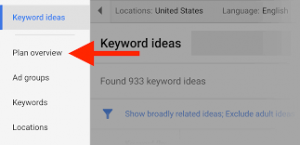Keyword Research in SEO: How to Target Prioritize- SEO Tools


Keyword Research-How to Target and Prioritize keywords: Every search engine optimization effort should focus on targeted and Prioritize keywords, but how does a small business decide which words and phrases to include?
In this blog, we’ll understand what targeted keywords mean, how to get them, and where they’ll be used to make sure your website and your web content are as good as possible.
In this post, I’ll also show you the Best Keyword Research Tools Free and Paid on the market and help you pick the ideal one for you.
Keyword Research – How to Target and Prioritize:
The Importance of Keyword Research in SEO
You must build the appropriate type of page and content for each keyword on your list.
Luckily, you may do it in two easy steps.
1. Identify the Parent Topic
2. Identify search intent
1. Identify the Parent Topic:
Let’s presume you have the following keywords on your list:
how to make Nescafe coffee
what is Nescafe coffee
Nescafe coffee recipe
how to make Nescafe coffee without instant
Nescafe coffee without sugar
You may be wondering, should you create a different page for each keyword or target them all on the same page? The answer largely depends on how Google views these keywords.
We also see that most of the results of both searches are posts about making Nestle coffee. It tells us what “Nestle Coffee is” is a sub-topic of the broader Nestle coffee-making method.
Therefore, it is possible to target these two keywords on the same page rather than create two separate pages.
In Keyword Explorer, our solution to this problem is to display a “parent topic” for each keyword. It tells you if we think you can rank your target keywords by targeting a broader topic instead.
However, our parent topic feature is not the best. It doesn’t always give you clear instructions on how to boost your keyword rankings by page (in SEO, this behavior is also called “keyword clustering”) because Google’s search results are variable.

2. Identify search intent:
Let’s presume you have the following keywords on your list:
coffee grinder
latte vs cappuccino
single cup coffee maker
arabica coffee
how to brew cold brew coffee
manual burr coffee grinder
If you run an online store through a blog, you need to understand what to target from blog posts vs. product pages.
Researchers want to know how to make cold wine coffee, not buy alcoholic beverages.
How do we know? When you search for this keyword in Google, the top results are all blog posts about the best burr coffee grinders.
Google understands intent better than anyone, so initial keyword results are often a good proxy for search intent.
You can see your desired results in Keyword Explorer for your country. Just hit the “SERP” carat.
From here, you can analyze how all three of C’s want to find the search intent to figure out how to target keywords:
- Content-type
- Content Format
- Content angle
1. Content type:
Types of content usually fall into one of five buckets: blog posts, products, categories, landing pages, or videos.
2. Content format:
Content formats apply to most ‘informative’ content. Common examples include how-to lists, news articles, opinion pieces, and reviews.
3. Content angle:
The content’s key selling point is its angle. For example, People looking for “how to make latte” don’t seem to want to know how to do it without a computer or other special equipment.
Just know that when you find it necessary to align your content with expectations, you don’t have to follow the herd and keep searchers in the bubble of their expectations.
Conclusion:
First, use your main keyword in the first two sentences of your content, or at least in the first paragraph. Next, use this keyword and its variants in keywords such as the following. The best practice is to include long-term semantic indexing (LSI) keywords instead of the exact keywords each time.
Here’s an easy 8-step process for targeting keywords with blog content.
1: Study your niche.
2: Explain your goals.
3: Make a list of related topics.
4: Make a list of seed keywords.
5: Use good keyword research tools.
6: Study search intent.
7: Identify long-tail keywords.
8: Find out about your competitor.

How to prioritize keywords:
Prioritize keywords: This may seem easy in theory but more difficult in practice. Especially when dealing with high-volume materials. It is important to maintain a goal-oriented approach as much as possible, as the pressure for performance and broader subjectivity certainly comes into play.
As you search for keywords, analyze their measurements, and group them, then ask yourself:
- What is the traffic potential of this keyword?
- How fierce is the competition?
- What will be the benefit of his position?
- Do you already have content on this topic? If not, what’s the point of creating a competitive page and promoting it?
- Do you already rate this keyword? Can You Boost Your Traffic By Improving Your ranking through Some Positions?
- Is it likely to turn into traffic leads and sales, or will it just bring brand awareness?
The key point is that search volume, potential traffic, complexity, and search purpose are all important factors to consider, you also need to consider how the traffic from these keywords will benefit your business.

How to assess the keyword ideas’ “business potential”:
The most common method is to categorize keyword suggestions into three categories: TOFU, MOFU, and BOFU.
For Ahrefs, here are some TOFU, MOFU, and BOFU keyword examples:
Top of the Funnel (TOFU): Top of the Funnel (TOFU) subjects include online marketing, SEO, and how to improve website traffic.
Middle of the Funnel (MOFU): How to do keyword research, how to build links, how to do a website audit.
In general, TOFU keywords have the highest potential for traffic, but visitors aren’t interested in buying anything yet. And keywords like MOFU and BOFU will bring you less traffic, but they are close to becoming your customers.
In other words, we think this concept is limited and perhaps even misleading.
Here are three reasons why:
First of all, they do not base their ads on TOFU / MOFU / BOFU. They created an ad that takes the reader from difficulty to purchase your solution.
Second, assigning a final TOFU, MOFU, or BOFO label to each keyword is quite challenging because things are not always clear-cut.
Third, some marketers expand their definition of TOFU to the point where they cover irrelevant topics. Case in point, Hubspot:
By stating that they sell marketing software, how do you think they will convert the people who come to your articles:
- famous quotes
- free email accounts
- resignation letter
- best website designs
To address this issue, we’ve developed a simpler and more reasonable “business score” to determine the value of a keyword. And it’s basically about how well we can put our content into our content.
You always want to achieve short, medium, and long-term ranking goals. If you focus only on short-term goals, you will never rank highly profitable keywords. If you focus only on medium and long-term goals, it will take years to get traffic.
Keyword Research Tool Free & Paid:
Search engine optimization (SEO) specialists utilize keyword research to uncover and research search terms that people type into search engines when they’re looking for products, services, or general information. Users type questions into search engines, and keywords are connected with those inquiries. Its goal is to make Google searches more efficient for users.
What is the best keyword research tool?
The following is a list of the 5 most effective keyword research tools free and Paid. Hoping that next six months, these incredible technologies have helped you increase my organic traffic by 22.20 percent:
Google Keyword Research Tool:
There are many keyword research tools offered, but only a few are as well-known as Google keyword tools. Keyword Planner, a Google tool, provides marketers and advertisers with a wealth of keyword data, including related search keywords, ad group ideas, and keyword suggestions. However, despite its power and variety, Google’s keyword tool has one big flaw: it requires an AdWords account to utilize.
As a result, WordStream’s Free Keyword Suggestion Tool is one of the great free alternatives to Google’s Keyword Planner.
How SEO Keyword Research tool helps you better results:
With SEO keywords that enable connect searchers to your site, a website that is well optimized for search engines “speaks the same language” as its potential visitor base. So you must understand how consumers search for the products, services, or information that you provide.
How to find the Best Keywords for SEO Tool?
As a marketer, SEO keyword research should essentially be a continual and ever-evolving aspect of your job. Most new search marketers make the same mistakes when it comes to keyword research for SEO:
- When it comes to SEO keyword research, you should only do it once.
- Not updating and expanding their SEO keyword list, or
- Targeting phrases that are overly popular, implies that they are extremely competitive.
Bonus Tip: You should not only experiment with new keyword search tools and keep track of the results, but you should also feel free to try new things based on your own research.
Most Popular SEO Blogs:
- Welcome to your SEO learning journey | Basic to Advance
- SEO-friendly blog post – 10 Tips for Writing
- Off-Page SEO: What It Is and Why It’s Important
- ON-PAGE SEO – Learn SEO in 7 steps | Basic to Advance
- What is a Search Engine? | Welcome to your SEO learning journey
- Keyword Research: How to Target and Prioritize keywords
- KEYWORD RESEARCH | Learn SEO in 7 Steps
- 7 Tips for keyword research in SEO – Things to Know
- WordPress SEO Tips | How to Boost Rankings
- Link building – How to build high-quality backlinks
- TRACKING SEO PERFORMANCE | Lean SEO in 7 steps





